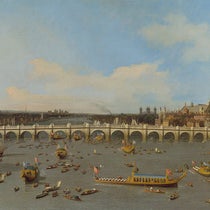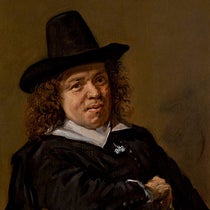Scientist of the Day - Jean Fernel
Jean-François Fernel, a French physician, mathematician, and astronomer, died Apr. 26, 1558 at the age of about 61; his date of birth is unknown. Fernel was born in a small town not too far from Paris; his father, an innkeeper, had enough money to support Fernel until he was 27, at which time he was left on his on. Fernel matriculated at the Collège de Sainte-Barbe, part of the University of Paris, and about midway through his university education, he suddenly realized that everything he was being taught was a medieval rehash of ancient sources that none of his teachers had ever read. The Renaissance was well along in Italy, but it was apparently slow in gaining a foothold at the University of Paris. So Fernel took some time off to immerse himself in Aristotle, Plato, Cicero, and Euclid, and apparently did this night and day for 5 years. From his labors emerged his first three books: the first was called Monalosphaerium, which was the name of an astronomical instrument he invented to serve astrological medicine; the second was titled De proportionibus, about mathematical fractions, again with astrological overtones; and the third, and most extensive, was called Cosmotheoria, a theory of the planets, perhaps intended to rival that of Georg Peurbach, which was the standard textbook on the subject.
We have all three of these works in our History of Science Collection, bound into one tall but slim folio volume. All three books were printed by Simon de Colines (his print shop was right next to the Collège de Sainte-Barbe), and this is a great mystery, because de Colines was the finest printer in Paris, and Fernel at that time was a complete unknown, and dead broke, as his father had cut off his support. However this marriage was pulled off, the result was a glorious volume. De Colines became well known for his criblé woodcuts, using small punches to make tiny holes in the woodblock and create a pleasing background texture. All three treatises have title pages with a criblé border; we show you a detail of the border for the Cosmotheoria, with its minute portraits of Astronomia, and her agent on earth, Pythagoras, along with Musica and Orpheus. You can see the full title page in our third image. The type fonts are in a beautiful Roman style, and even the initial letters are just gorgeous – we show you a detail below of an initial letter "E."
Most of Fernel's biographers mention the Cosmotheoria, but, surprisingly, only to point out that Fernel described there how he measured the length of a degree by taking a coach from Paris to Amiens and counting the revolutions of the wheels of his carriage in order to measure the distance, arriving at a figure for the length of a degree that was fairly close to that measured by Jean Picard, the next great French geodesist, working in the 1670s. Now this is an amazing feat for 1527, especially from someone who is going into medicine, and it is worthy of mention. But that is far from the most striking feature of the Cosmotheoria, which is rather the set of large woodcuts that show the epicycle-deferent systems of the five major planets. It is as if someone opened the De fabrica of Andreas Vesalius and did not notice the standing skeletons or the full-page woodcuts of the muscle-men.
The ancient Greek astronomer Ptolemy of Alexandria, in his Almagest, had worked out systems of circles (epicyles) moving on circles (deferents) for each planet, necessary to account for the changing speeds and distances of the planets from the Earth, assuming that the Earth is the center of planetary motion. Later textbooks such as Peurbach’s usually included diagrams of these epicycle-deferent systems, which you can see at our post on Peurbach. Since the textbooks were octavo-size, the diagrams were small, prhaps two to three inches across. In Fernel’s Cosmotheoria, which is a folio, the woodcut diagrams are fully 8 inches across – the largest I have ever seen – and truly elegant and lovely. We show here the diagram for Mars (fifth image), where the epicycles are large, to account for the sizeable variation in speed and brightness for that planet, and Jupiter (sixth image), a planet that does not vary so much in brightness or speed, and so requires smaller epicycles. For years, I used Fernel’s diagrams when explaining Ptolemaic astronomy to my classes, since they are so large and clear. But for some reason, they are never reproduced, and no one seems to know they exist. I hope to change that, a little, with this post.
Those of you who have heard of Fernel are no doubt wondering when I am going to talk about his medical career, which occupied his life from 1530 on, and the answer is, I am not. We own a later edition of Fernel’s On the Hidden Causes of Things (1564), but that is about it for our Fernel holdings. Fernel wrote books on physiology (in fact, he invented the word, and the discipline) and on medicine, but we are not a medical library and do not have these in our holdings. Anyway, you can learn about Fernel’s distinguished medical career in any biographical account, including that on Wikipedia. If you want to learn about his short astronomical career, before he turned to medicine, this post is about it.
We have several near-contemporary portraits of Fernel in our portrait book collection – he was quite a famous man in his day, physician to the King – but we like the portrait on a medal that was struck in France in 1774 (second image), honoring Fernel (in front) and Ambroise Paré, the distinguished French surgeon and contemporary of Fernel (behind). It is based on the one true portrait of Fernel of 1554, and being in relief, has a depth that is lacking from the woodcuts. We took the image from an auction site, so there are apparently copies available on the market.
You can learn more about Simon de Colines and criblé woodcuts at our post on Oronce Fine, a contemporary of Fernel who probably designed the woodcut borders and initials of Fernel’s first three books.
William B. Ashworth, Jr., Consultant for the History of Science, Linda Hall Library and Associate Professor emeritus, Department of History, University of Missouri-Kansas City. Comments or corrections are welcome; please direct to ashworthw@umkc.edu.












